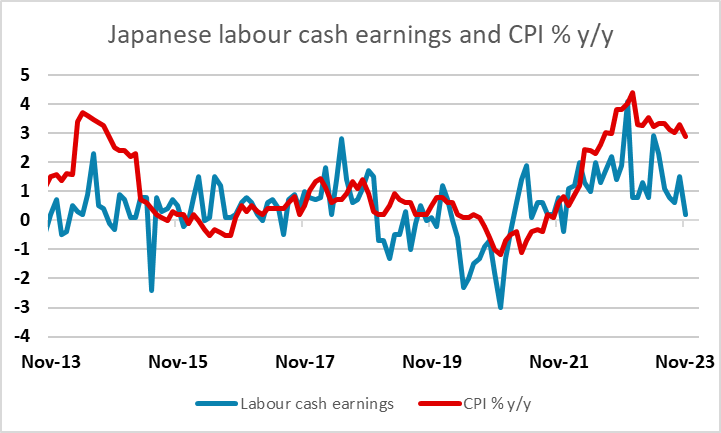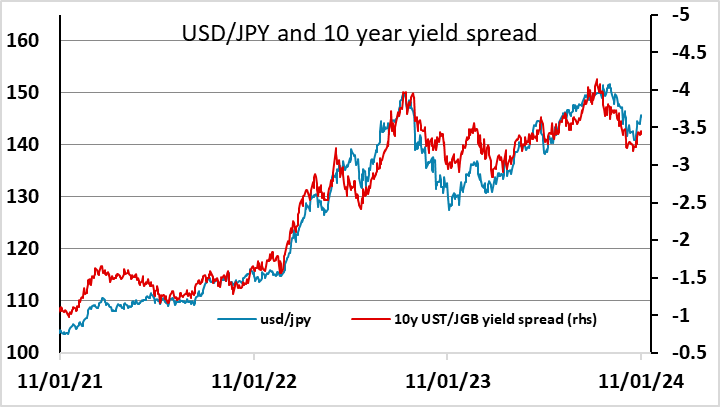JPY flows: JPY soft but approaching buying area
JPY on the back foot as weak earnings data throws doubt on the potential for BoJ tightening. But JPY still has a case for gains based on valuation

US CPI will be the main focus today, but the main FX theme this week has been JPY weakness, notably on the crosses. The weakness in the Japanese labour cash earnings data yesterday helped trigger renewed JPY weakness and some further decline in JGB yields. Earnings growth fell to 0.2% y/y, the lowest since December 2021, and given the higher rate of inflation now this implies a significantly negative path in real incomes. This throws into doubt any expectation of BoJ tightening in the near term, especially since the CPI data is steadily falling back. But the JPY decline is starting to look overdone, with USD/JPY moves running ahead of the move in yield spreads. This could of course change if US CPI is strong, but it suggests USD/JPY will be vulnerable to any weakness in CPI.

On most of the crosses, the JPY continues to be more correlated with equity risk premia than with yield spreads, so JPY gains will likely depend on risk premia rising slightly, as they will if yields come lower and equities hold steady. EUR/JPY was the big gainer yesteray, but even on the risk premium measure, it looks to have run ahead of the normal relationship. Unless we see outsize equity makret gains on the back of softer US CPI, the bias on softer numbers will be to the EUR/JPY downside. On stronger numbers we may see some initial JPY weakness on the crosses, as European yields are liekly to follow US yields up and the USD may make some initial yield related gains against the JPY. But if equities suffer from higher CPI, expect any EUR/JPY rise to be reversed.

However, from a big picture perspective there is still a case for JPY gains based on the real depreciation in the JPY in the last few years. Due to relatively low Japanese inflation, USD/JPY has risen 13% more in real terms than in nominal terms in the last 3 years. At some point, this valuation move is going to be corrected, even without moves in yield spreads.

This valuation point is most clearly seen in CHF/JPY, since the CHF has behaved more classically by rising in line with relatively low Swiss inflation in spite of its lack of yield advantage. While Swiss and Japanese inflation has been similar in the last few years, CHF/JPY is up 44% in the last 3 years, and the case for these gains based on yield spreads has disappeared as Swiss yields have dropped in the last few months.
